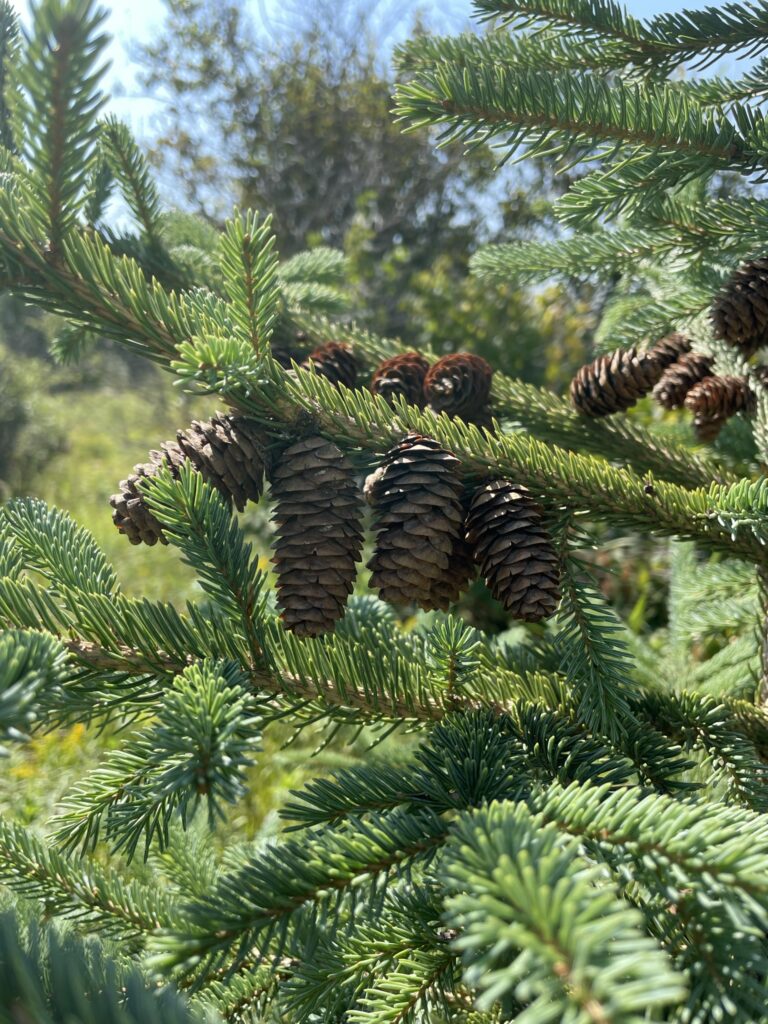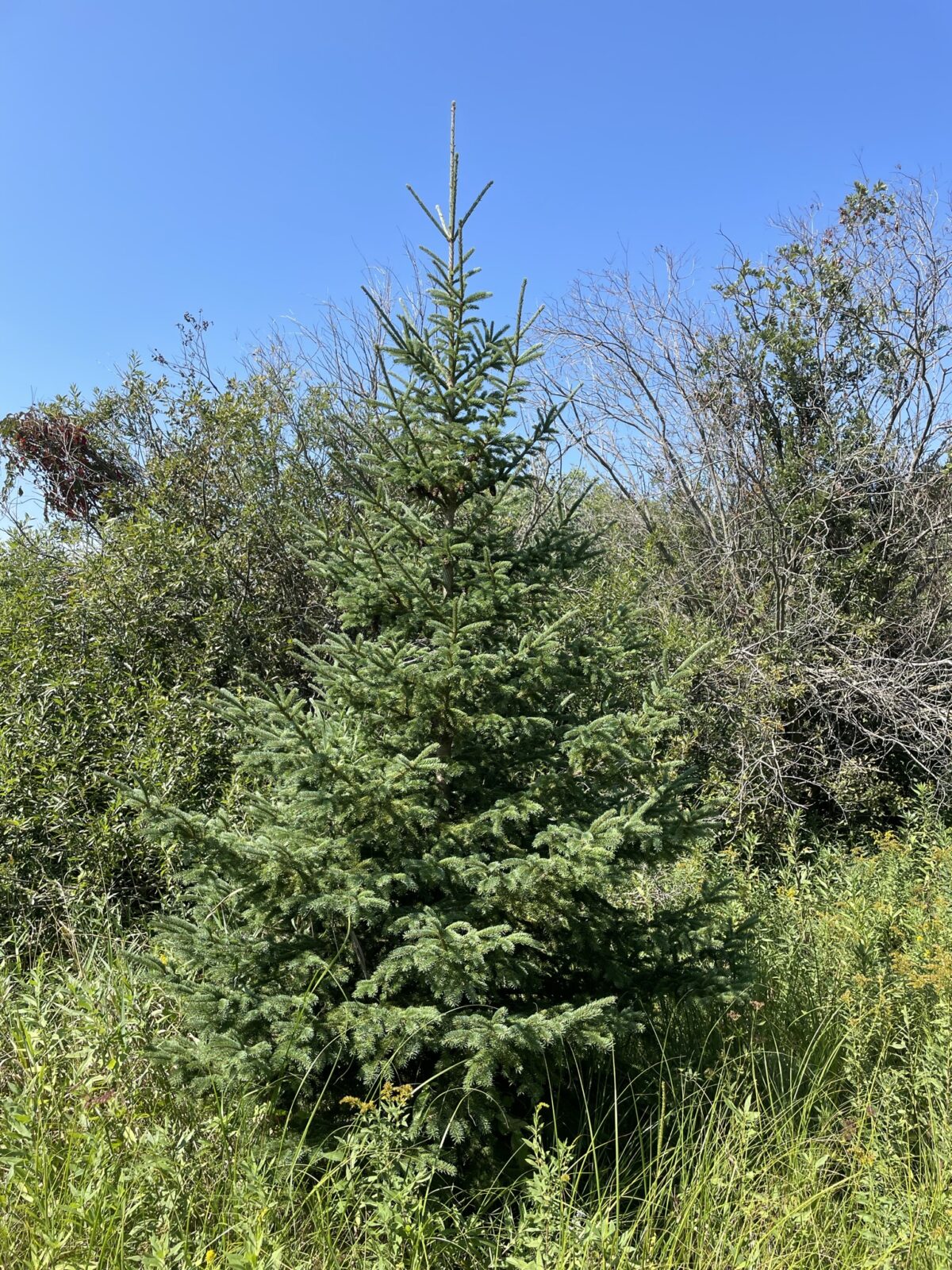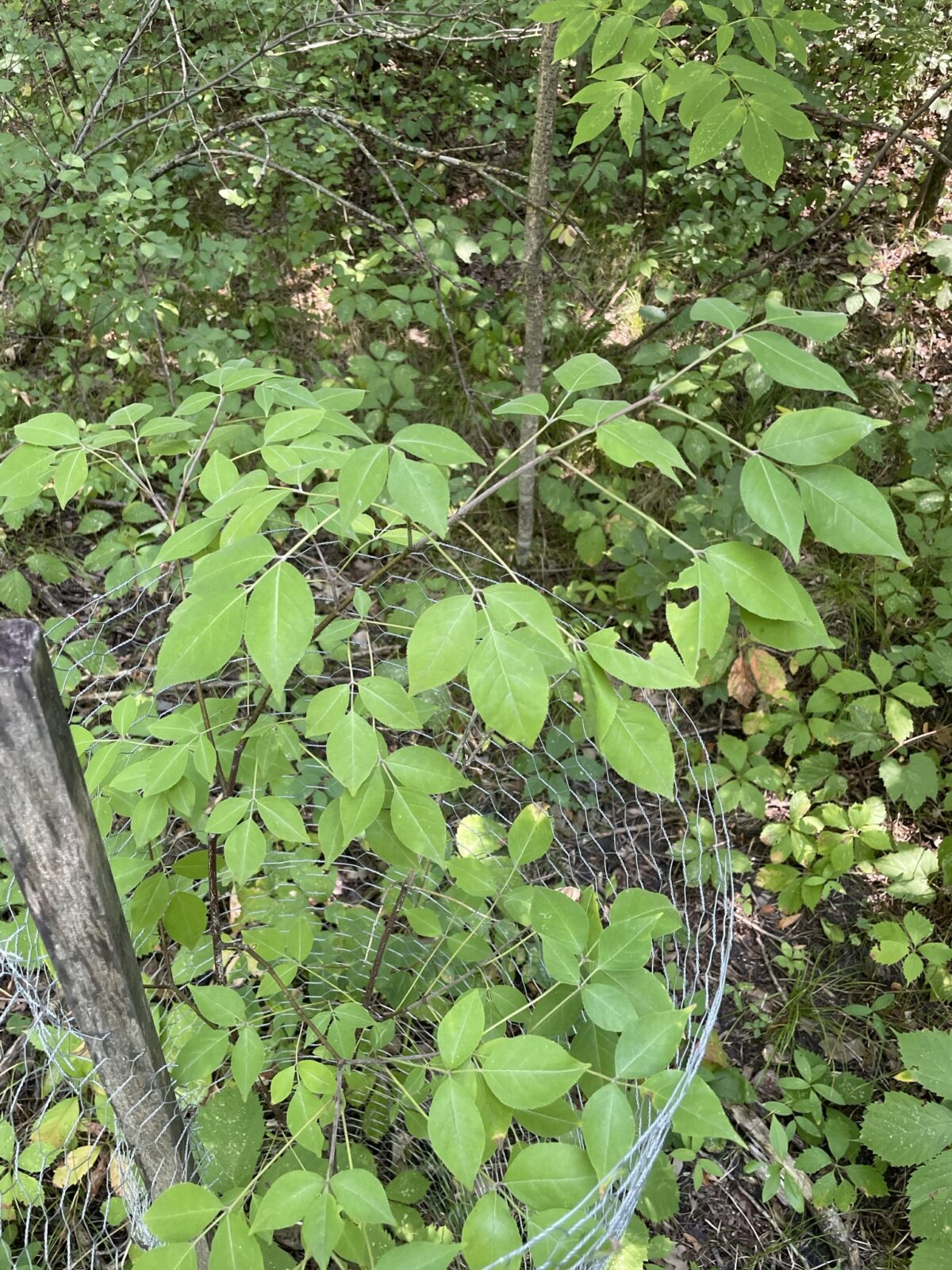
Native To State: NO
Naturally Occurring: NO
Description
Appearance: Picea glauca var. densata is a variety of white spruce known for its conical shape, evergreen needles, and distinctive cones.
Leaves: The needles are evergreen, short, and stiff, with a bluish-green color.
Cones: The cones are small, cylindrical, and reddish-brown.
Bark: The bark is thin, grayish-brown, and scaly.
Habitat: It is commonly found in coniferous forests and is adapted to various soil types.
Distribution: Black Hills spruce is native to western North America, particularly the Black Hills region.
Occurance
Planted in Northwest corner – collected directly from the black hills


